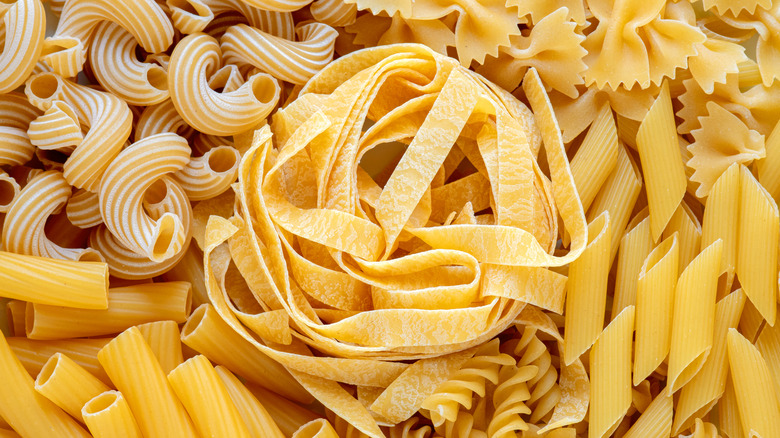Why Ina Garten Loves Using 2 Different Pastas In Her Dishes
Pasta may be Italian, but Americans love it. USA Today reports, on average, Americans chow down on about 20 pounds of pasta each year. To put that number into perspective, it equals 5.95 billion pounds of pasta in total. What type of noodle do we love the most? There are so many different types of pasta it may seem difficult to choose what pasta shape you want to cook-up, but if you need some inspiration, Americans are partial towards fettuccine Alfredo, followed by gnocchi and spaghetti, per Shane Co.
Still, when you cook pasta, chances are you are not always using an entire box of your pasta shape of choice. So, what do you do with the uncooked leftover pasta? Throwing it away should never be an option, especially when you consider that according to the American Journal of Agricultural Economics, people in the U.S. waste around 31% of the food they buy. The academic journal went on to explain that waste is equal to $240 billion. It's a lot, but luckily, Ina Garten has the answer.
The Barefoot Contessa shared in her cookbook, "Cook Like a Pro," via Food 52, that she actually likes to use two different types of pasta in her dishes and here's why you might want to try doing so, too.
It adds extra texture
According to Food 52, Ina Garten said in "Cook Like a Pro" that she has no problem mixing two different shaped pastas together and her reasoning is pretty sound. Garten wrote, "I love using two different kinds of pasta not only because they add great texture but because you use up the leftover boxes of pasta in your pantry." And before you start questioning whether it's OK to mix different shaped pastas, the answer is, yes, it is.
In fact, Garten isn't alone in practicing this pasta method. Giada De Laurentiis said on her Giadzy website that this practice led to the creation of pasta mista. De Laurentiis goes on to explain that the practice originated in Naples and was a way for pasta factories to use up leftover pasta shapes. Mixed pastas work well in soups and baked pasta.
The one caveat Yahoo Life suggests is to resist using overly thick pieces of dried pasta because they need to cook longer, which could result in the rest of your pasta turning into a squishy mess. Cathy Whims, the chef of Nostrana and Oven & Shaker in Portland, Oregon clearly agrees with Garten. Whims explained that different shaped pastas can transform a dish. "That's what makes it interesting. Some parts are more al dente, and some less," she told the outlet.

